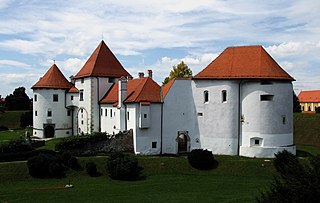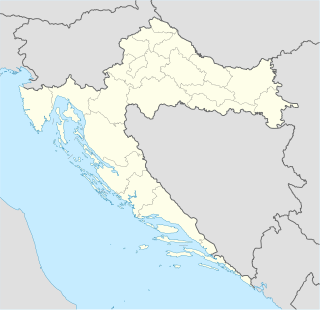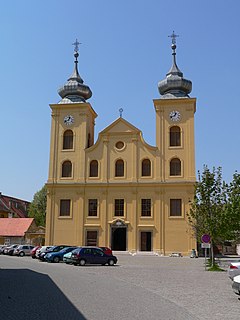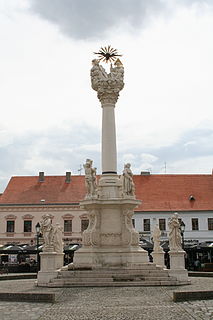| The City Guard | |
|---|---|
| Zgrada Glavne straže | |
 | |
| Alternative names | Glavna straža |
| General information | |
| Architectural style | Baroque |
| Location | Osijek, Croatia |
| Address | Trg Svetog Trojstva 2 |
| Coordinates | 45°33′39″N18°41′43″E / 45.56083°N 18.69528°E Coordinates: 45°33′39″N18°41′43″E / 45.56083°N 18.69528°E |
| Current tenants | Archaeological Museum Osijek |
| Construction started | 1728 |
| Completed | 1729 |
| Opened | 1729 |
| Technical details | |
| Floor count | 2 |
The City Guard (Croatian : Zgrada Glavne straže) is the name of the building which formerly housed the city guard of Osijek, Croatia. It is located in Tvrđa.

Croatian is the standardized variety of the Serbo-Croatian language used by Croats, principally in Croatia, Bosnia and Herzegovina, the Serbian province of Vojvodina and other neighboring countries. It is the official and literary standard of Croatia and one of the official languages of the European Union. Croatian is also one of the official languages of Bosnia and Herzegovina and a recognized minority language in Serbia and neighboring countries.

Osijek is the fourth largest city in Croatia with a population of 108,048 in 2011. It is the largest city and the economic and cultural centre of the eastern Croatian region of Slavonia, as well as the administrative centre of Osijek-Baranja County. Osijek is located on the right bank of the river Drava, 25 kilometres (16 mi) upstream of its confluence with the Danube, at an elevation of 94 metres (308 ft).

Tvrđa (Citadel) is the Old Town of the city of Osijek in Croatia. It is the best-preserved and largest ensemble of Baroque buildings in Croatia and consists of a Habsburg star fort built on the right bank of the River Drava. Tvrđa has been described by the World Monuments Fund as "a unique example of an eighteenth-century baroque military, administrative, and commercial urban center".
Contents
Today, the building houses the Archaeological Museum Osijek, a local museum focusing on the history of the city.

Archaeological Museum Osijek is an archaeological museum in Osijek, Croatia. It is located in Tvrđa.











